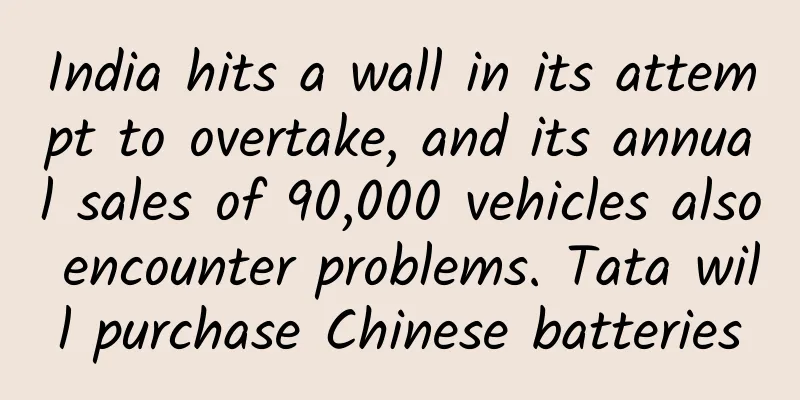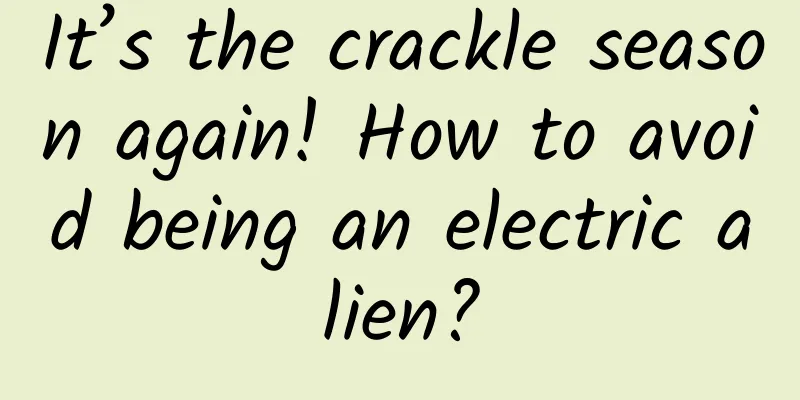India hits a wall in its attempt to overtake, and its annual sales of 90,000 vehicles also encounter problems. Tata will purchase Chinese batteries

|
Many countries have the illusion that if China can do it, so can I. Take our neighboring country India as an example. Its national conditions are similar to those of China. Both are populous developing countries that also hope to achieve independent industrialization as soon as possible and complete national industrial upgrading. Now, decades later, what is the effect of India's actions? We have talked enough about things that are too far away, such as agriculture, industry, and the military. As for the current situation in India, everyone knows that the water of the Ganges can only be given to friends and cannot be drunk by oneself. This is also a well-known joke on the Chinese Internet. Let's talk about the electric vehicle industry. As a new thing, China and India are almost standing at the same starting line in their development. However, even if they started at the same time, the two countries have achieved very different development speeds. Recently, media reported that Tata, India's largest automobile company, is purchasing power batteries from Chinese manufacturers in an effort to solve performance problems such as battery power decline in its electric vehicles. At the same time, it will seek cooperation to expand the supply chain and improve its own technological capabilities. We can read two key messages from this report. Just like their Hindustan Aircraft Maintenance Plant, Tata's self-produced power batteries have performance problems of one kind or another, and are currently in the process of being gradually exposed, and Tata itself does not have the ability to solve these problems; In addition, affected by international geopolitics, Tata's cooperation with Chinese manufacturers is not in-depth. It previously preferred to cooperate with European and American manufacturers, but now it has to purchase this key component from Chinese manufacturers. It can be seen that apart from us, Tata does not have many suitable partners in the world. The short version is that the technological gap between Tata and Chinese manufacturers has allowed it to ignore political factors and its own self-esteem and treat us as a supplier. What is the reason that makes Tata so anxious? Where did its power batteries come from before this? Tata is a giant company in India, equivalent to Samsung in South Korea. As the largest automaker in India, it occupies 60% of the local electric vehicle market share. Tata has a parts system company called Tata AutoComp, which is roughly equivalent to SDI under Samsung. The power batteries used by Tata are all manufactured independently by this company. It is worth noting that the "independence" here is actually discounted, because its most critical battery cell comes from China's power battery manufacturer Guoxuan High-tech. Yes, it is Chinese companies that have quietly supported half of India's electric vehicles with their own technology. In the past two years, Tata electric buses have been using a large number of power batteries from China, and this time the scope has been expanded to passenger cars. Maybe, possibly, but... Anyway, Indian passenger cars are facing big problems with battery technology, so big that it has hurt their fragile self-esteem. Some media said that Tata's move to seek help from China for power batteries is a big blow to the ambitious Indian automobile industry. In recent years, India has been working hard to promote "Make in India" in the hope of achieving industrial independence. However, after several years of development, India has found that it is very difficult to catch up with, or even approach, China's current electric vehicle technology. Of course, from a purely commercial perspective, it is still a very wise move for Tata to purchase power batteries from Chinese manufacturers. After all, Tata does not have the relevant design and production capabilities at this stage. It is impossible to watch cars on the road have problems one after another because of inexplicable arrogance. In 2023, India's domestic electric vehicle sales will be about 90,000, while China's sales in the same period will be about 9.5 million. Even if the sales volume cannot even catch up with a fraction of China's, Tata still needs to purchase a large amount of technology and finished products from China. At the same time, the Indian government is also vigorously promoting the development of electric vehicles. According to the plan, by 2030, electric vehicles in India are expected to account for one-third of the entire automobile market. On the one hand, there is a huge market demand, and on the other hand, the technical level is not strong enough. Under the contradiction of people's low addiction, the best way to meet the demand is to purchase from outside. In the first half of 2024, Chinese power battery manufacturers accounted for 64.9% of the global power battery market, and also supplied more than 70% of the key raw materials for power batteries to the world. Various technical routes such as ternary lithium, lithium iron phosphate, and solid-state batteries developed in parallel. Chinese manufacturers do not rule out technology cooperation and transfer to other countries and regions. CATL, BYD and other manufacturers have built battery factories in many overseas markets such as Mexico, Thailand, Brazil, etc., and have a large number of partners around the world. There is no technical shortcoming, and their delivery capabilities and production capacity are among the world's top levels. Seek technical cooperation from advanced manufacturers, purchase core components, and then grow through cooperation, ultimately achieving technological accumulation and even overtaking others. This is what Tata Motors thinks now, and this is also what BYD, which conducted "reverse research and development" on Toyota's classic models 20 years ago, thought. As we all know, India is not China, and Tata is not CATL or BYD. It is almost a fantasy for them to catch up with China. India lacks key minerals such as lithium, cobalt, and nickel, and has done much less overseas prospecting than Chinese manufacturers. It can be said that India fell into "hell mode" at the very beginning in the most critical resource link of new energy vehicles. China is also relatively short of these resources, but manufacturers such as CATL continue to invest in mines around the world. At the same time, domestic companies in the relevant industrial chain have mastered key mining and deep processing technologies, which require more than 20 years of technological accumulation. Obviously, India and its Tata Motors do not have such conditions. People often say that if China can do it, so can I, which is a common illusion in the world. This statement is especially true for India. In the foreseeable future, Tata Motors' reliance on China's new energy industry chain will gradually deepen. Of course, if India can formulate continuous industrial support policies similar to China's, or make great efforts to build charging infrastructure, continuously strengthen independent research and development, and master the upstream and downstream technologies of the new energy industry chain, it is possible to achieve comprehensive catch-up in 20 years. The question is, based on what you know about the water of the Ganges, can India do this? As a winner of Toutiao's Qingyun Plan and Baijiahao's Bai+ Plan, the 2019 Baidu Digital Author of the Year, the Baijiahao's Most Popular Author in the Technology Field, the 2019 Sogou Technology and Culture Author, and the 2021 Baijiahao Quarterly Influential Creator, he has won many awards, including the 2013 Sohu Best Industry Media Person, the 2015 China New Media Entrepreneurship Competition Beijing Third Place, the 2015 Guangmang Experience Award, the 2015 China New Media Entrepreneurship Competition Finals Third Place, and the 2018 Baidu Dynamic Annual Powerful Celebrity. |
<<: PPBOX 4K TV box experience is outdated and the price of the box is still high
>>: Experience of Skyworth Q+ 2nd generation TV box
Recommend
The zoo has issued a "fruit ban", how should we eat fruit? | Ficus microcarpa
Eating fruit in the zoo can cause diabetes . Is f...
What does "starting with an egg" mean? This is called native advertising!
When doing information flow advertising , the mos...
What is the future prospect of Douyin Store? Is it worth opening?
On Douyin, we can learn a lot of life knowledge, ...
Apple released iPhone X and other new products. We sorted out the comments and complaints from foreigners.
This morning, Apple held its autumn new product l...
When you drink tea bags, drip coffee, or chew gum, you are probably also eating plastic.
Do you know how much plastic there is in our live...
Technology and market play a significant role in Chuangwei's leading position in the industry. Thoughts after 2014
January 5 (Reporter Zhang Xiaodong) The end of 20...
Chris2020 Charm System Private Tutoring Course "Includes: Dating Master + Long-term Relationship"
Chris2020 Charm System Private Tutoring Course &q...
Analysis of JD.com’s flash sales products
Various e-commerce software will have some specia...
Template for planning fission activities!
1. #Split the wheel lottery game and get a gift b...
Are you an apple or a pear? This body type may increase your risk of colorectal cancer...
Compiled by: Gong Zixin Colorectal cancer is the ...
6 indicators for good B-side operations!
If you want to do a good job in B-side operations...
The battle for attention is escalating: the 100,000+ era is over, the 1 million+ era is here
With the improvement of mobile Internet infrastru...
Did the moon fall really happen?
There is a disaster movie called "Moonfall&q...
Dots of Science | This is the rocket that helped Tianwen-1 land on Mars?
END Editor: Guru...
Are feet a "monitor" of blood sugar? If your feet show these 6 symptoms, it may indicate that your blood sugar is above the standard
The feet can be said to be a magnifying glass for...









